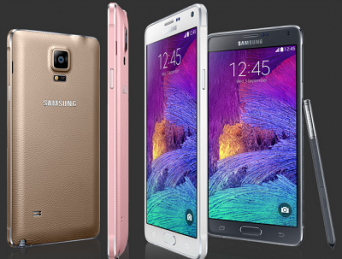Google's Nexus 6 takes on Samsung's Galaxy Note 4 - Phablet war

Tech giant Samsung dominated the big display category last year with its release of the Galaxy Note 4, taking the phablet market by storm through its defining features that are much greater than its predecessor, the Note 3. But now, early in the year, Google, through Motorola, hopes to corner a large segment of the phablet market from Samsung with the release of the new Nexus 6.
How do these two phones compare?
Display
Since phablets are known because of their incredibly large displays, this feature is usually the first spec that tech savvies tend to look into.
The Note 4's display is a 5.7-inch Super AMOLED screen, much smaller than the Nexus 6's 6-inch AMOLED panel. Both sport 2k resolutions at 2560 x 1440, and colors on both phones are bright and rich. However, the older Note 4 lords it over the Nexus 6 when it comes to vividness — it has 515 ppi pixel density over Google's 493 ppi. Durability-wise, Samsung's Note 4 also comes out on top, albeit by a slim margin, since it has Corning Gorilla Glass 4 as opposed to the Nexus 6's Gorilla Glass 3.

Processor
Both phones have the same set of hardware in its core, Qualcomm's Snapdragon 805 chipset. Also, both the Note 4 and Nexus 6 are quad-core running on 2.7 GHz Krait 450 CPU and an Adreno 420 GPU with 3 GB of RAM. Samsung's device actually comes in two variants: one with an updated Snapdragon 805 and one with an Exynos chipset.
In terms of hardware specs, again the Samsung Galaxy Note 4 stands as the clear winner. Although Google's flagship phablet has a bigger screen, stereo speakers, basic water resistance feature, and built-in wireless charging, the Galaxy Note 4 has a higher fps rate, higher storage due to expandable memory, higher cam resolution, and built-in perks such as a fingerprint sensor, fitness sensors, and an IR blaster.











